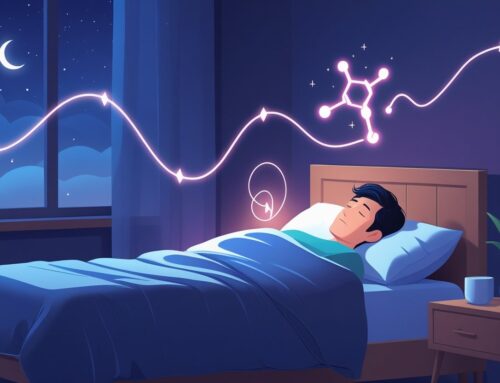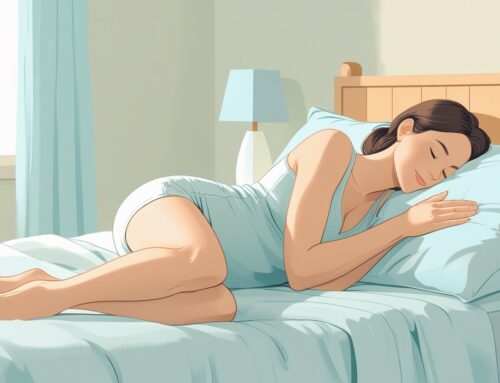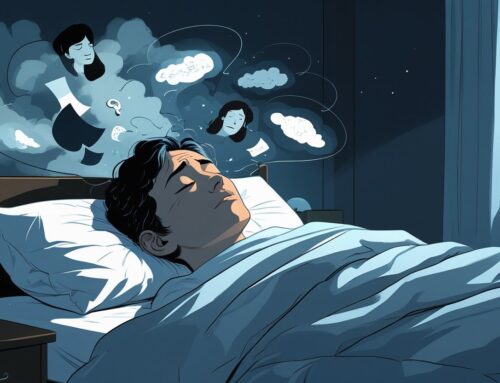Stretching at night is a simple way to release tension from the day. It helps the body loosen up, which makes it easier to fall asleep and stay asleep. Most stretches focus on the neck, shoulders, back, and legs. These are the areas that often carry stress after long hours of sitting, standing, or moving around. Taking a few minutes before bed to stretch can calm both the body and the mind.
When you do it regularly, stretching becomes part of your nightly routine. It signals to your body that it’s time to rest. Over time, this can improve the quality of your sleep and help you wake up feeling more refreshed.
Key Takeaways
- Stretching relaxes muscles and quiets the mind at bedtime.
- Working on major muscle groups can displace sleep-robbing tension.
- A nightly routine fosters better overall sleep.
- A supportive mattress combined with gentle nightly stretches works together to ease tension, align your spine, and set you up for deeper and more comfortable sleep.
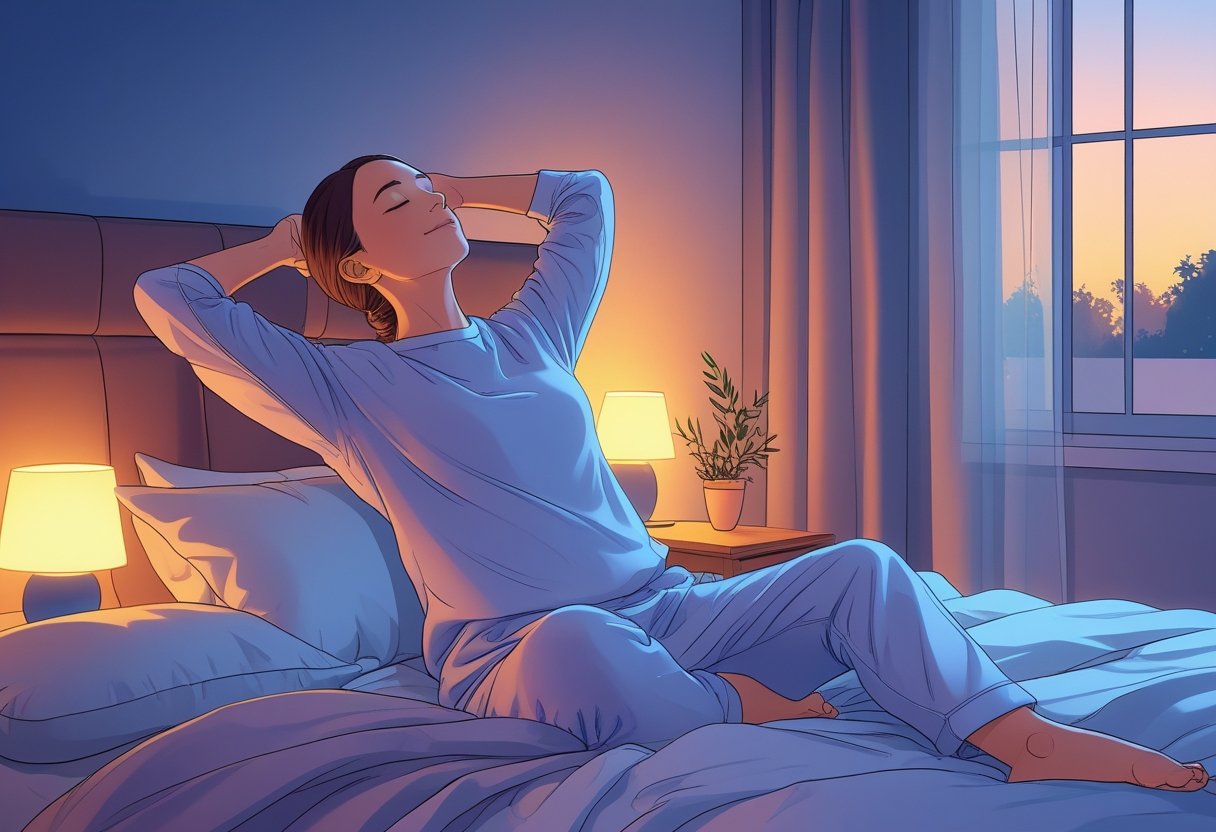
Why Stretching Before Bed Improves Sleep
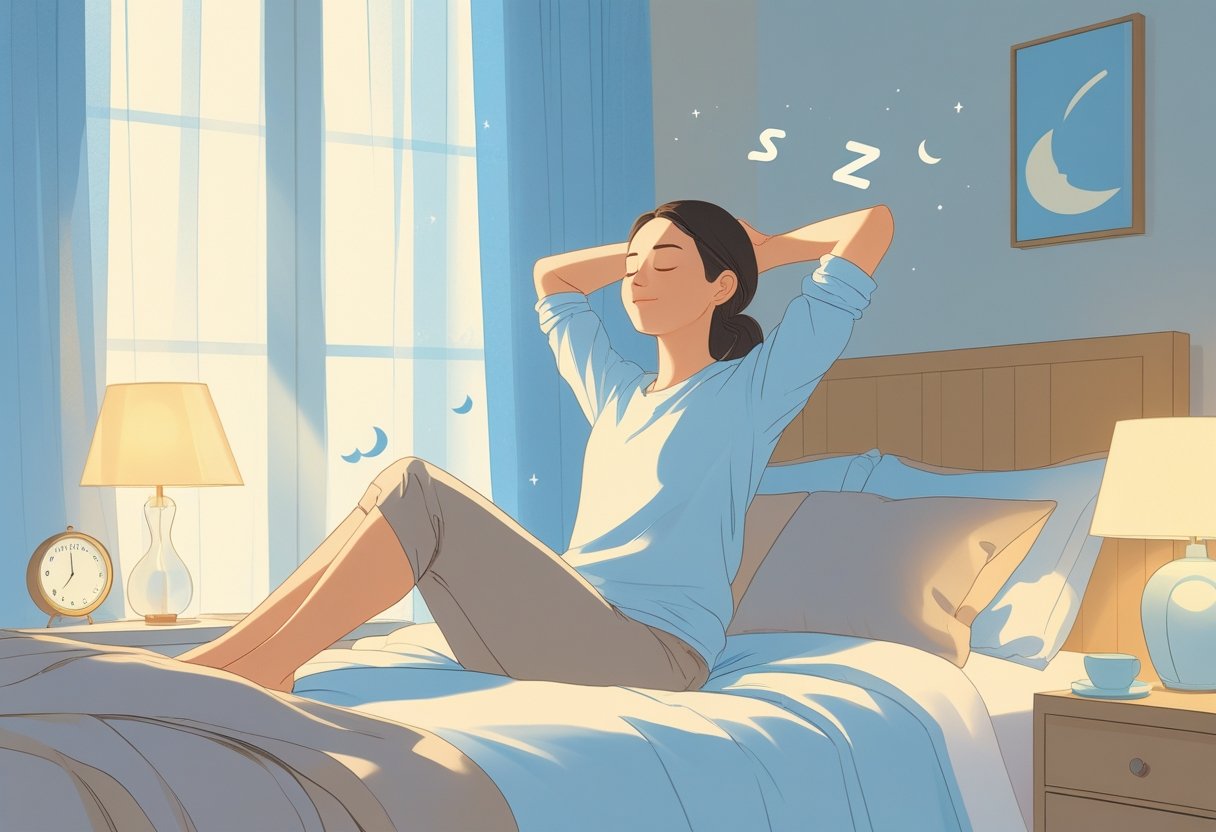
Stretching prior to bedtime relaxes muscles, relieves tension, and quiets the mind. This readies the body for relaxation and aids deeper, more regular sleep. Physical relief, scientific validation, and relaxation methods are the effects involved.
Physical and Mental Benefits
Stretching helps release the tightness we build up from stress and bad posture. It gets blood moving better, which can ease sore muscles and stiffness that make it hard to rest. Simple moves for the neck, shoulders, back, and legs can loosen tension before bed. Stretching also calms the mind. It signals the body to relax, slowing down things like a racing heart. Doing it at night can bring down your heart rate and blood pressure, making it easier to fall asleep and stay asleep.
Current Research on Stretching and Sleep
New research indicates that stretching prior to going to bed enhances the quality of sleep by causing individuals to fall asleep more quickly and decrease night awakenings. Static stretching, during which positions are sustained for a number of seconds, is particularly beneficial. Studies also add that involving stretching with mindful breathing enhances relaxation.
Meditative movements such as yoga and tai chi have a good effect on mental calmness and physical comfort, contributing to improved sleeping patterns.
Mindfulness and Relaxation Effects
Stretching before bed is slow and gentle. You move with your breath and focus on the moment. This helps quiet busy thoughts that often make it hard to sleep.
When you stretch mindfully, your body makes less cortisol, the stress hormone. At the same time, it switches on the system that helps you relax. Simple poses like child’s pose or lying flat on your back can calm both the body and the mind. You don’t need to do much. A few neck rolls, shoulder circles, or leg stretches are enough. The key is to move slowly and pay attention to your breathing. Over time, this routine tells your body it’s time to rest.
Essential Bedtime Stretches for Sleep
Stretching at night relaxes the muscles and calms the mind. It addresses tight spots, releases tension, and prepares the body for sleep. Gentle, static stretches that last 10 to 30 seconds are most effective to ensure the heart rate isn’t elevated too much.
Child’s Pose
Child’s Pose is an easy yoga stretch that decreases stress and relaxes the back and shoulders. It includes kneeling with the knees wide enough apart for the hips and lowering the chest toward the ground. The arms extend behind or lie at the sides. This position lengthens the spine, releases shoulder tightness, and softens facial tension. It encourages deep breathing, which helps slow the heart rate. Holding Child’s Pose for 30 seconds to one minute creates a calming effect, which makes it one of the best stretches before bed for overall relaxation.
Seated Forward Bend
The Seated Forward Bend stretch targets the lower back and hamstrings. Seated on the floor with the legs extended, the individual slowly reaches forward to the feet or ankles. The objective is to lengthen the spine without arching the back. This stretch assists in loosening tightness in the back and legs, which are common problems after being at work all day. Maintaining the stretch between 20 and 30 seconds enhances flexibility and relaxes the nervous system. It is an effective night stretch to release tension in muscles that can disrupt sleep.
Legs-Up-the-Wall Pose
Legs-Up-the-Wall Pose is beneficial to circulation and tired legs. The pose involves lying back with straight legs up against a wall, making a 90-degree angle at the hips. This stretch lightly extends the back of the legs and relaxes lower back tension. It also promotes circulation away from the feet, which might decrease swelling and pain. Keeping this stretch for 5 to 10 minutes is effective as a night-time stretch to relax and get ready for sleep.
Knee-to-Chest Stretch
The Knee-to-Chest Stretch is for the hips and lower back, which tend to feel stiff after sitting. One or both knees are brought gently toward the chest while lying on the back and are held in place. This stretch loosens tension in the lumbar spine and relaxes the hip flexors. Keeping the knee(s) for 20 to 30 seconds alleviates discomfort and facilitates smooth movement. It is a good stretch to perform before sleep for individuals who develop back stiffness or occasional night pain.
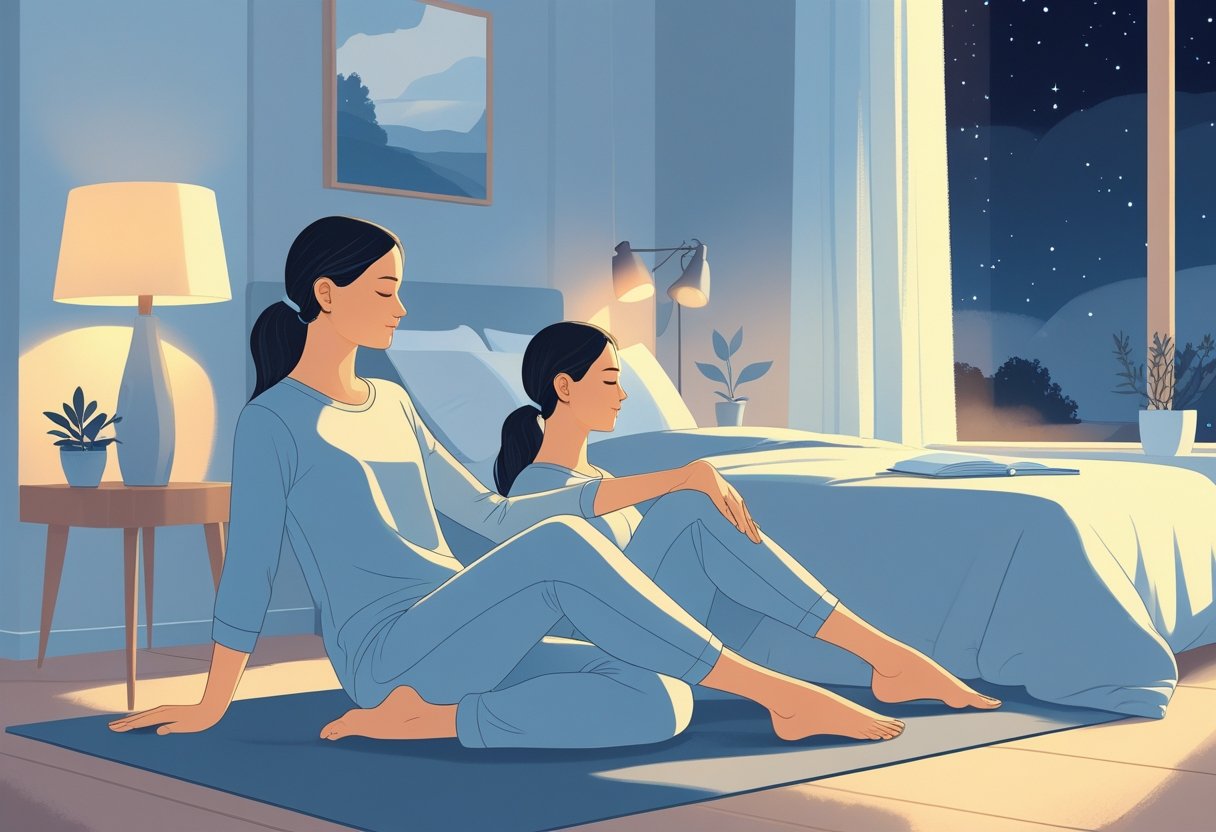
Additional Stretches to Try Before Sleep
Experimenting with different stretches at bedtime allows for those areas of tension to be addressed throughout the day. They target relaxing the major muscles that become stiff, relieve cramps, and can help relax the body before sleep.
Neck Rolls and Side Stretches
Rolls of the neck and side stretching ease tension from hours of screen time or typing at a desk. To roll the neck, slowly drop the chin toward the chest and then roll the head to one side in a circle before returning to center. The movement should be slow and controlled to prevent strain. Side stretches for the neck are done by tilting the head to each shoulder and holding the posture for 10-15 seconds. The stretch releases tension in the muscles of the neck and shoulders, loosening them. Doing two or three repetitions on each side relieves stiffness.
Both exercises enhance blood circulation and ease tightness. They are perfect as a part of nighttime stretches to induce soothing sleep.
Butterfly Pose
Butterfly pose is an easy seated stretch for the hips and inner thighs. It facilitates relaxation of the lower body and releases tension accumulated throughout the day. To do the butterfly pose, sit on the ground with the feet soles pressed together and knees bent outwards. Hold the feet with your hands and maintain a straight back. Gradually lean forward slightly while maintaining the elongation of the spine but cease if any pain is felt.
Sustaining this for 20-30 seconds can relax tight hips and promote circulation. This stretch is particularly useful for individuals who sit for extended periods or get cramps in the legs when going to bed.
Cat-Cow Movement
The cat-cow movement involves two soft stretches that affect the back, neck, and shoulders. It loosens the spine and removes tension usually experienced after sitting or sleeping uncomfortably. Begin on hands and knees with hands under shoulders and knees under hips.
For cat pose, curve the back up, bring chin to the chest, and draw belly in. Hold for several seconds. For cow pose, drop belly toward floor, lift head and tailbone up, and arch the back a bit. Repeat the sequence slowly 5 to 10 times. This movement enhances spinal flexibility and promotes deep rhythmic breathing, conducive to relaxation and sleep readiness.
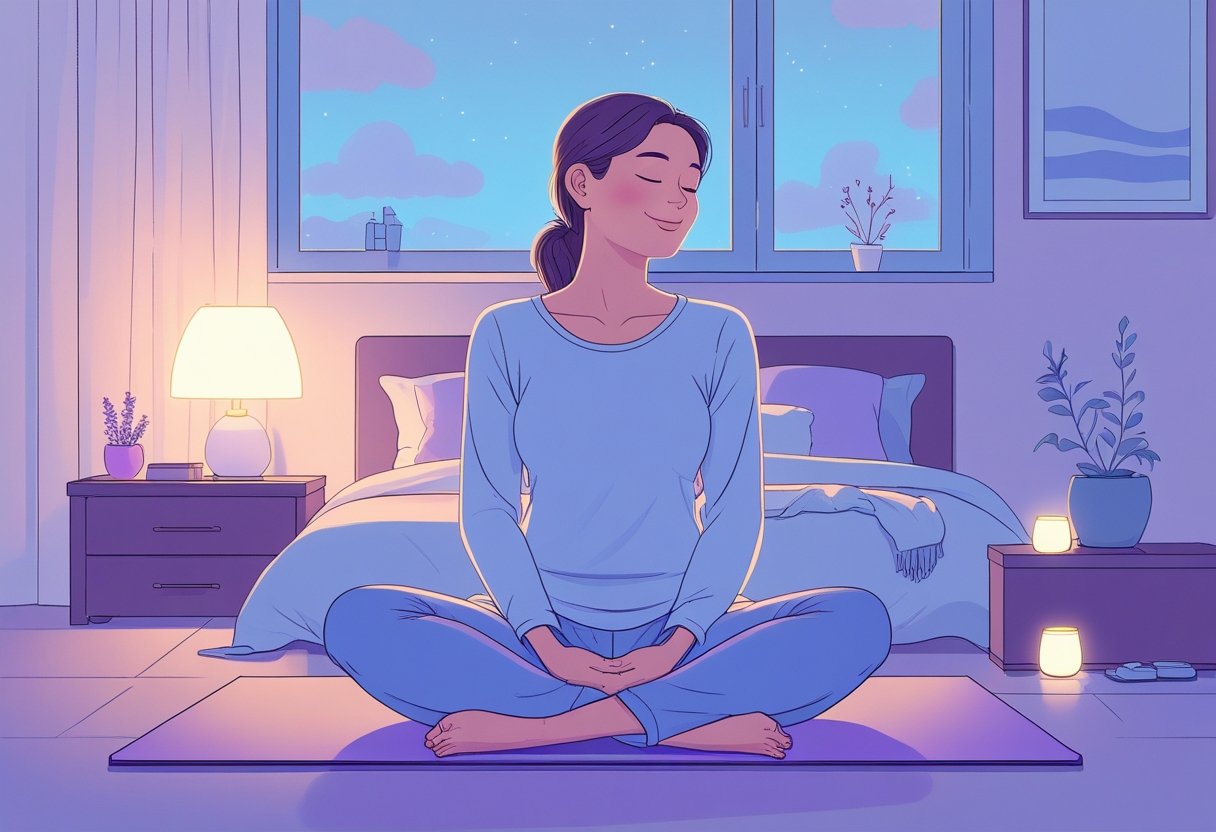
Building a Nightly Stretching Routine
A proper night time stretch routine must be suitable for an individual’s requirements and timetables. It is a matter of selecting appropriate stretches, understanding how long to hold them for, and regularity. These procedures form a soothing and efficient pre-bed stretch.
Creating Your Personalized Routine
When setting up a nightly stretching routine, focus on the areas that usually feel tight. For most people, that’s the neck, shoulders, back, and legs. A simple neck stretch can help if you’ve been looking at screens all day.
Choose stretches that feel gentle and easy. You don’t need anything complicated. A few yoga poses, like Child’s Pose or Cat-Cow, can also help release stress. Keep the routine short. Five to ten minutes is enough to signal your body that it’s time to slow down. Try doing it about an hour before bed so you’re more relaxed when you lie down. Adjust the stretches if something feels uncomfortable or if you have any limits with movement.
How Long to Hold Each Stretch
Static stretches, which involve holding a position, work best before bed. Holding a stretch between 10 and 30 seconds allows muscles to relax without causing strain. If a stretch causes sharp pain, the person should stop and try a gentler version. Slight discomfort is normal, but pain is not. Repeating each stretch two to four times helps improve flexibility over time. Slow and steady breathing during the stretch also supports relaxation.
Refrain from dynamic stretches or vigorous movements late at night, as they could raise heart rates and make it more difficult to fall asleep.
Consistency and Progress Tips
Doing a few stretches every night is easier when you do them at the same time. Your body starts to connect the routine with winding down for the day. You can set a reminder or make the space calming with soft lights or quiet music. This can help you actually look forward to stretching. It also helps to notice what feels different over time. Write down which stretches feel easier or where the tightness is going away. That way, you can see your progress.
And if your routine feels too repetitive, you can add new stretches or hold them a little longer. Small changes keep it interesting and help your body improve.
If you have an injury or pain, check with a doctor or health professional before stretching. It’s better to be safe than to make things worse.
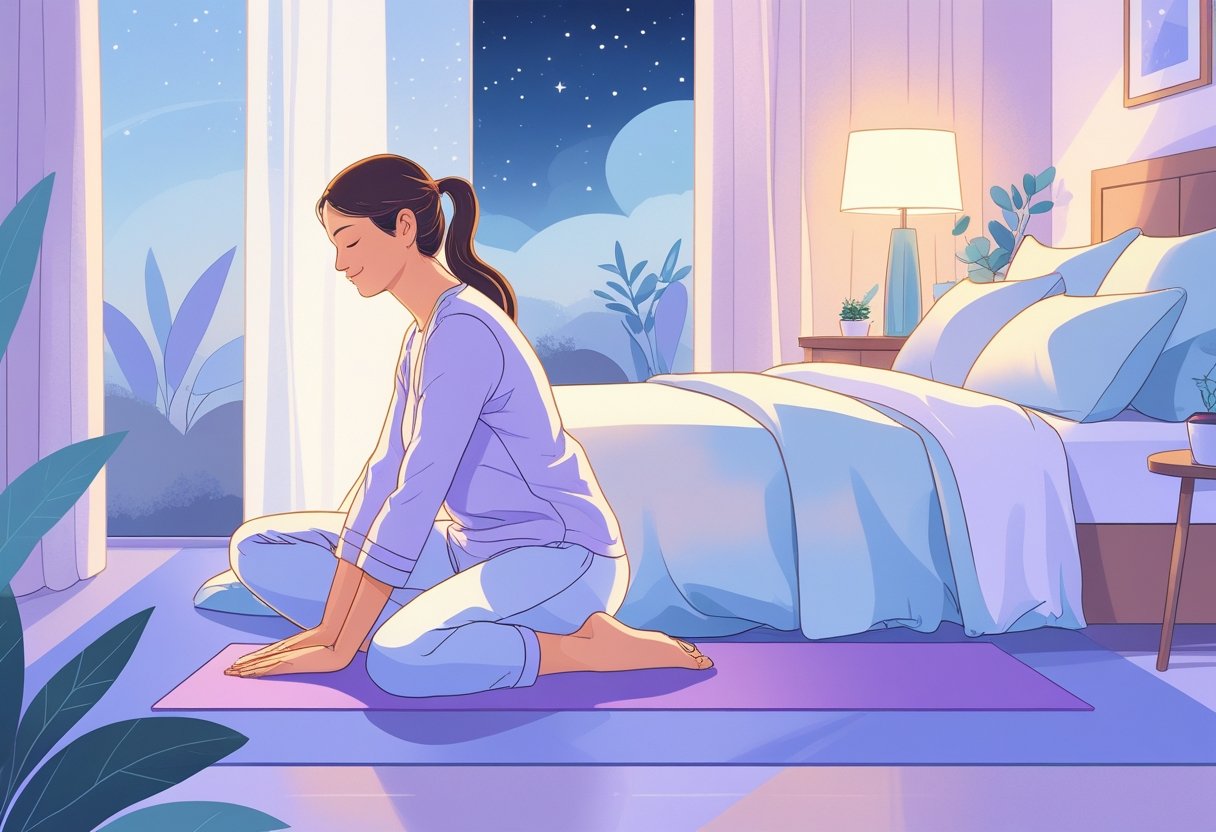
Best Practices for Safe and Effective Stretching
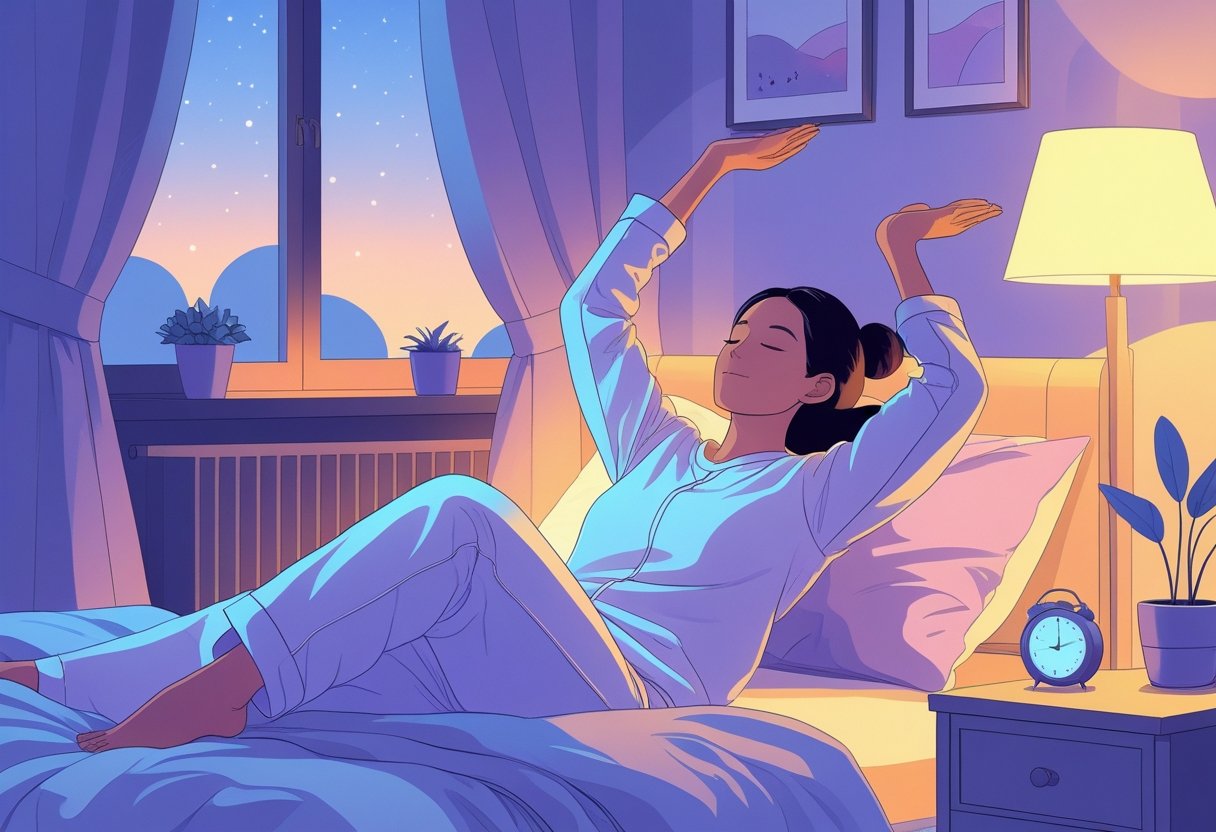
Stretching prior to sleeping can relax muscles and enhance sleep quality if done properly. Safety and technique are important so as not to injure oneself and derive the most benefit from stretching during nighttime.
Expert Tips for Beginners and Professionals Alike
Everyone, regardless of experience, should begin slowly and select gentle, static stretches. Holding stretches for around 10 to 30 seconds relaxes muscles without strain. Sustained breathing while stretching is crucial. Deep and steady breathing through the nose facilitates relaxation.
Stretches are best done around an hour prior to sleep. This is the time that allows for the muscles to relax and decreases heart rate, which aids in sleep. Beginners or individuals with physical injuries are advised to consult a health care provider to determine stretches that can be accommodated based on their conditions.
Stretching at night is beneficial for releasing tension generated from the day’s activities, particularly neck, shoulder, and back tightness. Maintaining movements slowly and intentionally enhances the possibility of a good night’s sleep.
Mistakes to Avoid
Steer clear of dynamic stretching prior to bedtime since it increases heart rate and alertness, which makes it more difficult to drift off to sleep. Dynamic stretching involves movements such as arm or leg swinging and active muscle contractions. Do not overstretch to the point of pain. Mild tension is to be expected, but pain indicates overstretching, which may lead to injury. In addition, do not hold your breath while stretching since it builds tension and stress.
Skipping a warm-up results in muscle strain. A simple warm-up such as walking or slowly moving limbs for a few minutes loosens muscles for stretching and minimizes injury risk. Finally, don’t hurry through stretches. Spending time to do stretches slowly enhances relaxation in muscles and enhances sleep quality.
Lifestyle Tips to Enhance Sleep Benefits
Enhancing sleep through stretches can be enhanced with the inclusion of relaxing activities and the design of a relaxing environment. Minor adjustments to regimen and setting cause the body to relax and enable quality sleep.
Synchronizing Stretching With Relaxation Procedures
Stretching at night works best when you move slowly and breathe deeply. This calms the nervous system and lowers stress. For example, if you do an overhead stretch, hold a deep breath, then let it out slowly. This helps your body relax. After stretching, you can do simple things like listen to calm music or try a short meditation. These habits signal your body that it’s time to sleep. Just avoid active workouts before bed since they raise your heart rate and make it harder to fall asleep.
Gentle stretches for the neck and back, combined with steady breathing, can release tension and quiet the mind. Over time, this not only prevents stiffness but also makes it easier to fall asleep and stay asleep.
Creating a Relaxing Sleep Space
A quiet, dark, and cool room makes bedtime stretching more effective. Less noise and light help your body calm down and get ready for sleep. It also helps to put away phones and other devices at least 30 minutes before bed. Blue light from screens can block melatonin, the hormone that makes you sleepy. A good mattress and soft sheets add comfort, letting your muscles fully relax after stretching.
Sticking to a regular schedule is just as important. Going to bed and waking up at the same time every day keeps your body clock steady. When you pair this routine with the right environment and stretching, sleep becomes deeper and more restful.
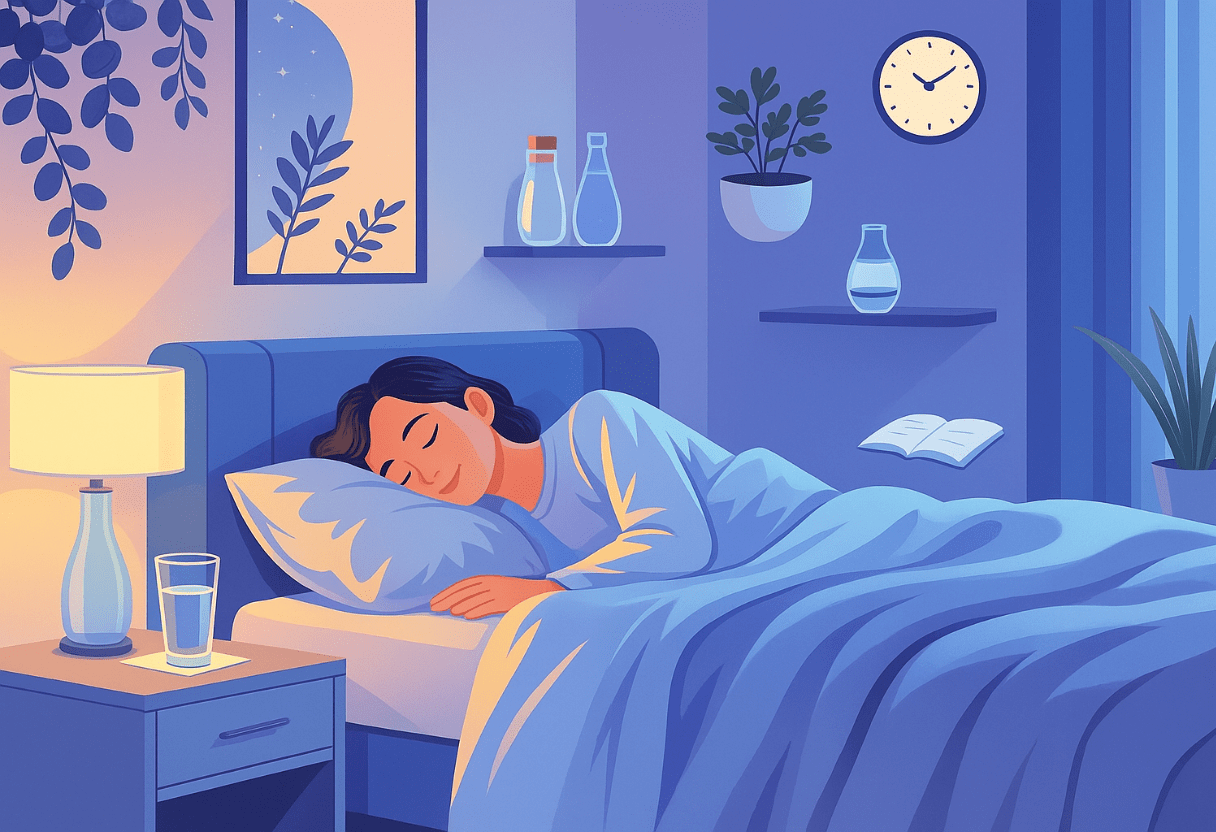
Stretches and Mattresses That Improve Nightly Comfort
Stretching before bed can help your body relax. It eases tight muscles and releases tension, which makes it easier to fall asleep. Simple moves for the neck, shoulders, back, and legs can take away some of the discomfort you feel after a long day.
Your mattress also makes a big difference. A good one supports the natural shape of your body and reduces pressure on sore spots. Many people with back pain say they rest better on a medium firm mattress because it balances support with just enough softness. When you combine light stretching with a mattress that supports you well, sleep usually comes easier. Your muscles feel more relaxed, your spine stays in line, and you’re less likely to wake up stiff or sore.
Fast tips to enhance comfort:
- Stretch your neck, shoulders, lower back, and legs
- Hold soft, static stretches for 10–30 seconds
- Choose a mattress that maintains your spine in a neutral position and feels comfortable for you
- Consider the material—memory foam is pressure-relieving, and innerspring provides bounce
The Puffy Cloud Mattress is known for being both soft and supportive. It’s made to keep your body comfortable and help you get better rest. This mattress works well for different sleeping positions, so it’s a good choice for most people. The memory foam layers ease pressure on your shoulders, hips, and back while keeping your spine in line. Many say it feels soft but steady, almost like floating, and they wake up feeling more relaxed and ready for the day.
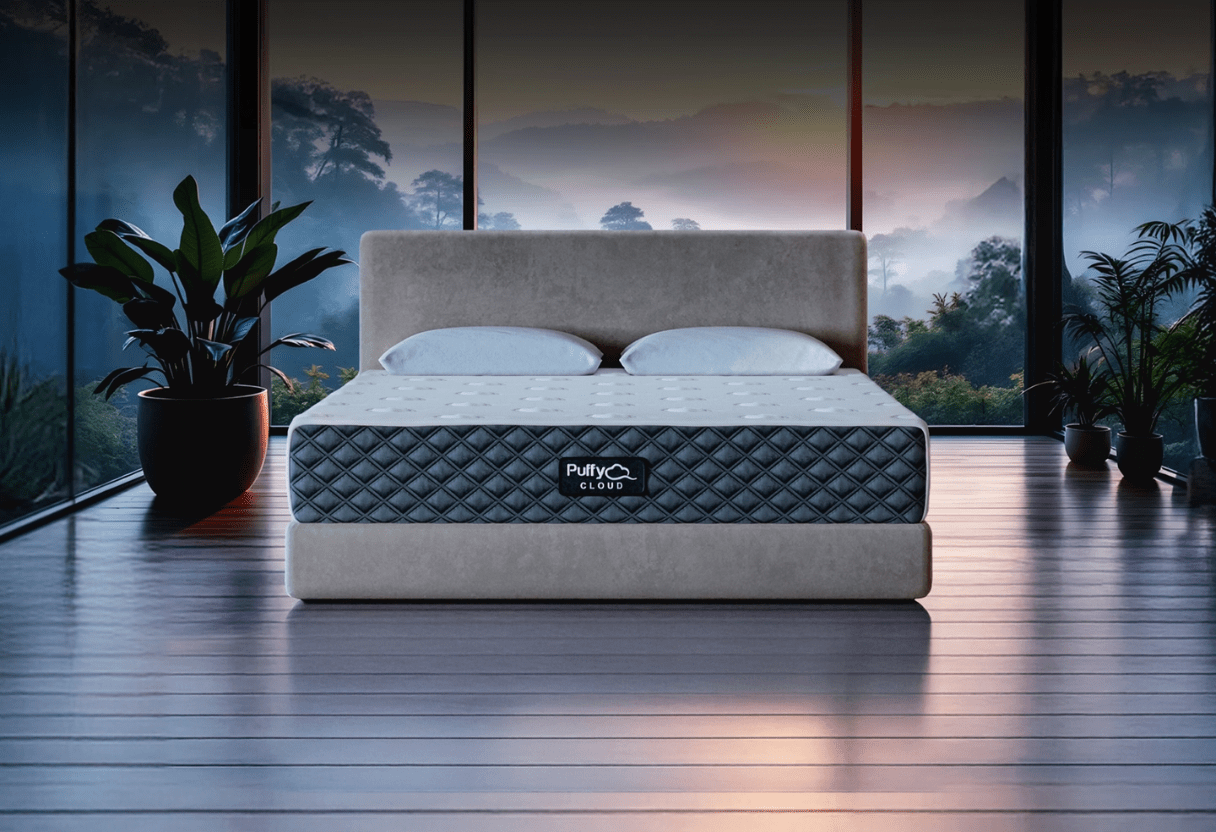
Frequently Asked Questions
Stretching before bed includes specific exercises that target key muscle groups to reduce tension and promote relaxation. Consistent practice may improve sleep quality because it calms the nervous system and eases physical discomfort. Routines vary for beginners, seniors, and those who want to focus on flexibility.



